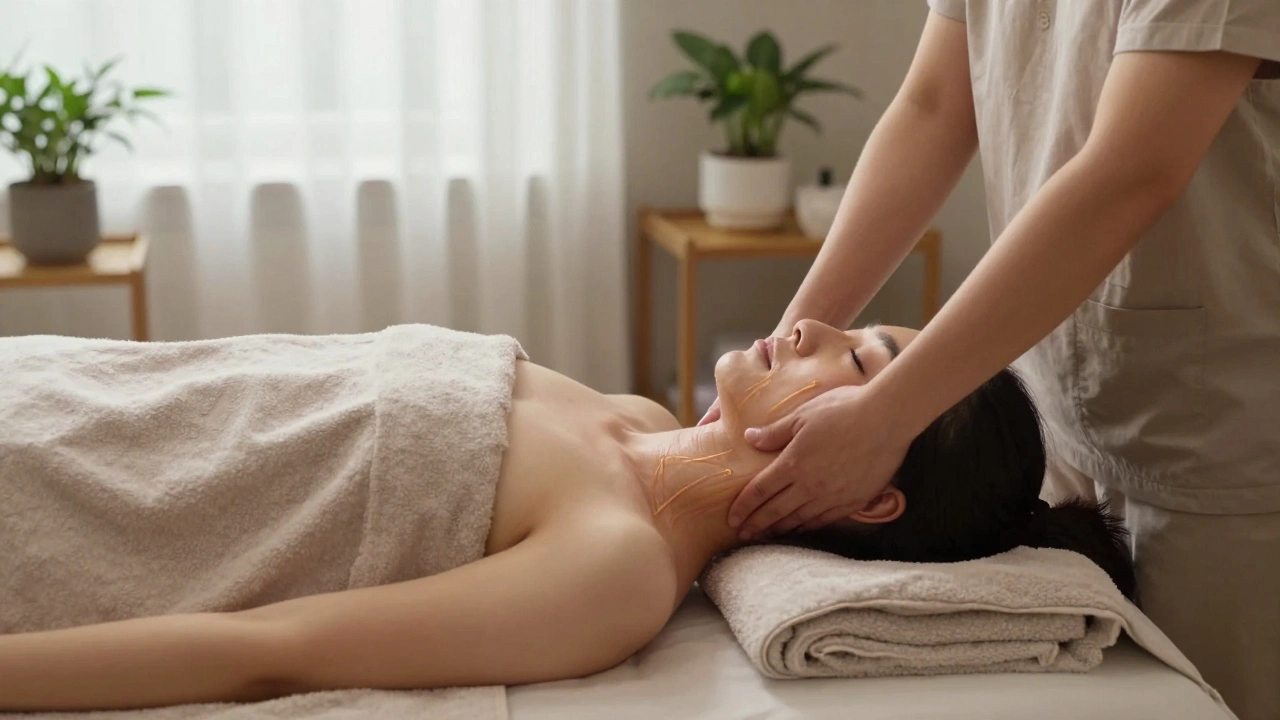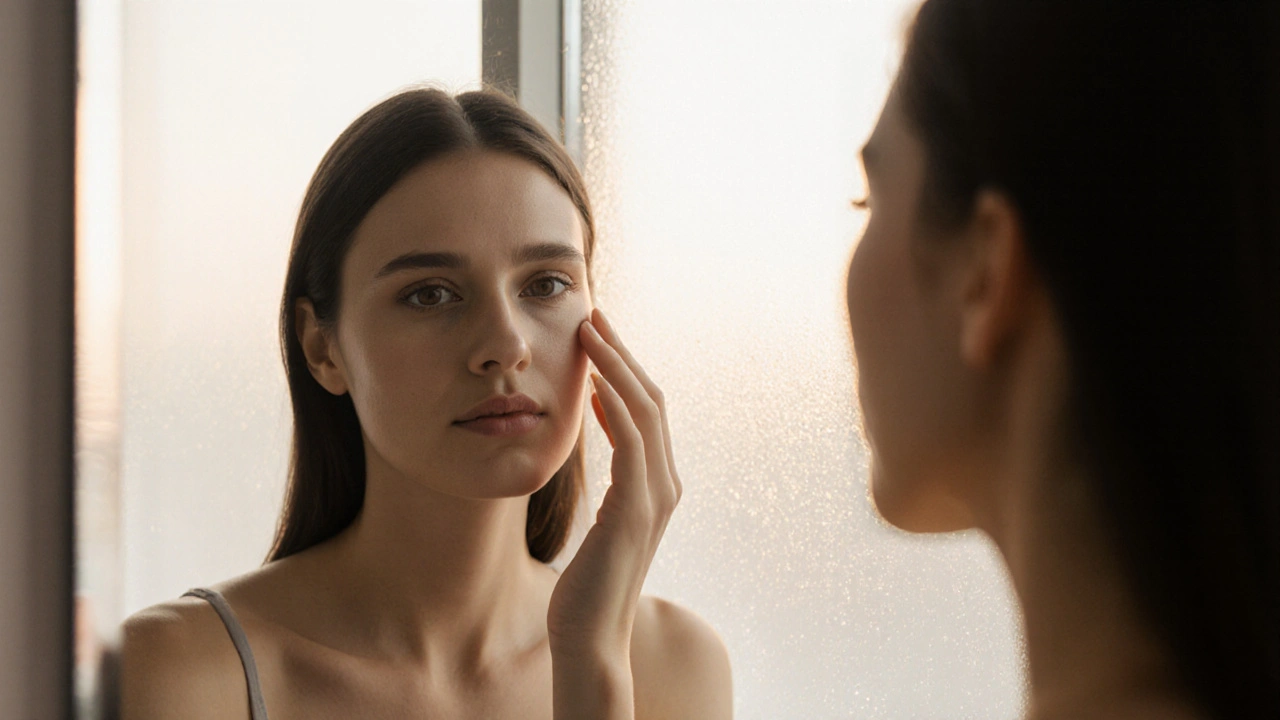Discover how lymphatic drainage massage boosts immunity naturally, especially for Londoners dealing with stress, pollution, and frequent colds. Learn how it works, where to find it, and what to expect.
Lymphatic Drainage Massage: What It Is and Why It Matters
If you’ve ever felt puffy after a long flight or just want a gentle way to boost your wellbeing, you’ve probably heard of lymphatic drainage massage. It’s a light, rhythmic technique that nudges the lymph fluid through your body, helping to clear out toxins and reduce swelling. Unlike a deep tissue massage that targets tight muscles, this approach feels more like a soothing stretch that works on the surface of the skin.
How the Technique Works
The lymphatic system is a network of vessels and nodes that carries waste away from tissues. During a session, the therapist uses slow, circular motions and light pressure to open up these pathways. The goal is to improve the flow of lymph, which in turn supports the immune system and encourages better circulation. Think of it as giving your body’s natural drainage system a little boost.
Top Benefits You’ll Notice
People who try lymphatic drainage often report less bloat, reduced joint pain, and a feeling of lightness after a few visits. The gentle pressure can also lower stress hormones, so you might feel calmer right after the treatment. For athletes, the massage can speed up recovery by flushing out metabolic waste faster. And if you’re dealing with post‑surgery swelling, many clinics use this method as part of the rehab plan.
Another perk is the immune boost. By helping lymph move more efficiently, the body can spot and neutralise germs quicker. That doesn’t mean you’ll never get sick, but you might notice fewer colds during the cold season. The technique is also safe for most people, including seniors, because it avoids deep pressure that could strain joints.
What to expect in a typical session? You’ll lie on a comfortable table while the therapist starts with a brief chat about any health concerns. The massage itself lasts 45‑60 minutes and focuses on the neck, shoulders, arms, and sometimes the legs. It’s quiet, the room is warm, and you can often hear soft music in the background. Because the pressure is light, there’s rarely any soreness afterward—just a pleasant sense of relaxation.
Before you book, think about a few practical things. Make sure the therapist is certified in lymphatic drainage, as the technique requires specific training. If you have a chronic condition like heart disease or a recent infection, let them know—there are a few cases where the massage isn’t advised. Also, stay hydrated after the session; drinking water helps the lymph carry waste out of your system.
Ready to try it? Search for “lymphatic drainage massage London” or ask your local spa if they offer the service. Many places combine it with a short aromatherapy session for added calm. A single appointment can give you a feel for the benefits, and a series of three to six sessions often yields the best results. So, whether you’re looking to reduce puffiness, speed up recovery, or just enjoy a gentle, detox‑focused massage, lymphatic drainage might be worth a try.
Lymphatic drainage massage reduces puffiness, boosts skin glow, and restores facial definition by clearing fluid buildup. A natural, non-invasive way to fight aging without needles or creams.
Lymphatic drainage massage gently moves fluid through your body’s hidden drainage system, reducing swelling, boosting immunity, and improving energy. Learn how it works, who benefits, and where to find it in London.
Curious about lymphatic drainage massage? This article unpacks how it really works, the science behind it, and the health perks it promises. You'll find out why so many people swear by this gentle technique for both wellness and beauty goals. Get tips for booking a session, what to expect, and how to stay safe. If you want to know if it's worth trying and what the research actually says, this guide covers all the essentials.
Lymphatic drainage massage could be your secret weapon in boosting your immune system, reducing swelling, and enhancing well-being. This specialized technique helps your body get rid of toxins and improves circulation. Discover how a few sessions can aid in relaxation and overall health without any complex procedures. Whether you’re dealing with bloating or just want to feel a bit lighter, this massage could be just the ticket.
Lymphatic drainage massage is a gentle technique that can help you feel refreshed and energized by improving your body's lymph flow. It's not just a luxurious spa treatment; it's a practical way to reduce swelling, boost your immune system, and enhance your overall sense of well-being. Dive into the many benefits of this therapy, learn how it works, and discover if it’s the right choice for you.
Lymphatic drainage massage is a gentle technique designed to improve the flow of lymph fluids, helping to reduce toxins and enhance circulation. By understanding its benefits and what to expect in a session, individuals can experience increased relaxation and health improvements. Whether you're looking for services in Bristol or curious about how it works, this guide provides insights on the types of massages available, where to find them, and how to enjoy a safe experience.







